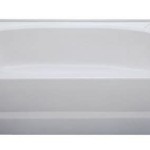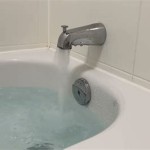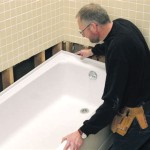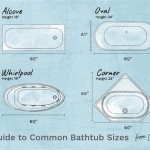Bathtub to Walk-In Shower Remodel
Converting a bathtub to a walk-in shower is a popular bathroom remodeling project that enhances both functionality and aesthetics. This renovation provides several benefits, including increased accessibility, a modern updated look, and improved space utilization, particularly in smaller bathrooms. Understanding the process, considerations, and costs associated with this type of remodel can help homeowners make informed decisions.
One of the primary drivers for bathtub-to-shower conversions is improved accessibility. Stepping over a high bathtub edge can be difficult or even dangerous for individuals with mobility limitations, seniors, or those with disabilities. A walk-in shower eliminates this obstacle, providing a safer and more convenient bathing experience. The installation of grab bars, a built-in bench, and a handheld showerhead further enhances accessibility and independence.
Aesthetically, a walk-in shower can significantly modernize a bathroom. Replacing an outdated bathtub with a sleek, contemporary shower stall creates a more open and spacious feel. Homeowners can choose from a variety of design options, including different tile patterns, showerhead styles, and glass enclosures, allowing them to customize the shower to their personal preferences and complement the overall bathroom design.
In smaller bathrooms, a bathtub-to-shower conversion can optimize space utilization. A standard bathtub can take up a significant amount of floor space. Replacing it with a shower, especially a neo-angle or corner shower, can free up valuable square footage, making the bathroom feel larger and less cramped. This is particularly advantageous in urban apartments or older homes with compact bathrooms.
The process of converting a bathtub to a walk-in shower typically involves several key steps. First, the existing bathtub is removed, including the surrounding tile and plumbing fixtures. Next, the plumbing lines are rerouted to accommodate the new shower configuration. The subfloor is then inspected and reinforced if necessary. A waterproof membrane is installed to prevent water damage. The shower pan or base is installed, followed by the wall surrounds, which can be tile, acrylic, or other suitable materials. Finally, the shower fixtures, including the showerhead, valve, and drain, are installed.
Several factors influence the overall cost of a bathtub-to-shower conversion. The size and complexity of the shower design are significant contributors. Custom tile work, intricate designs, and high-end fixtures typically increase the cost. The choice of materials also plays a role. Premium tiles, natural stone, and frameless glass enclosures are generally more expensive than standard options. Labor costs can vary depending on the contractor's experience and the region. Plumbing modifications, particularly if significant rerouting is required, can also add to the expense.
Before undertaking a bathtub-to-shower remodel, homeowners should carefully consider several factors. Resale value is an important consideration, particularly in family-oriented neighborhoods where a bathtub is often desirable. If the home only has one bathroom, removing the bathtub might negatively impact its appeal to potential buyers. Budget constraints should also be considered, and homeowners should obtain multiple quotes from reputable contractors to ensure they receive a fair price. The timeline for the project should be discussed with the contractor to minimize disruptions to daily routines.
Choosing the right contractor is crucial for a successful bathtub-to-shower conversion. Homeowners should seek licensed and insured contractors with experience in bathroom remodeling. Checking online reviews and references can provide valuable insights into a contractor's reputation and workmanship. Obtaining detailed written contracts that outline the scope of work, materials, and payment schedule is essential to protect both the homeowner and the contractor.
Proper permits are generally required for bathroom remodeling projects, including bathtub-to-shower conversions. Homeowners should check with their local building department to determine the necessary permits and ensure the contractor obtains them before commencing work. This helps ensure compliance with building codes and regulations and protects the homeowner from potential liabilities.
Maintaining a functional and aesthetically pleasing bathroom is a priority for many homeowners. A bathtub-to-shower remodel offers a viable solution for improving accessibility, modernizing design, and optimizing space. By understanding the process, considering the associated costs, and selecting a qualified contractor, homeowners can achieve a successful bathroom transformation that meets their needs and enhances their home's value.

Tub To Shower Remodel How Do It Right Homeadvisor

How To Remodel A Tub Shower For Your Bath

Master Bathroom Renovation Converting A Bathtub Into Walk In Shower Our Handcrafted Life

7 Bathtub To Shower Conversions That Add Style Space Sweeten Com

The Pros And Cons Of Converting A Standard Tub Into Walk In Shower Naperville

Walk In Bathtub Vs Shower Woodbridge Bath

Luxurious Walk In Showers Shower Ideas

25 Walk In Shower Layouts For Small Bathrooms

Tub Inside Shower Design Ideas Bathroom Combo

Bathroom Remodel Do You Choose A Tub Or Walk In Shower
Related Posts








